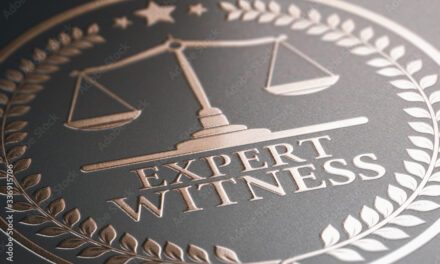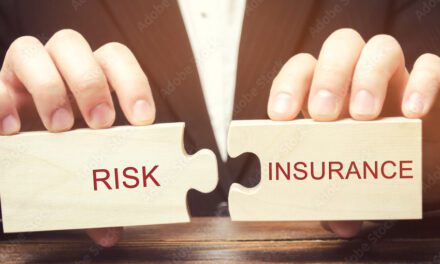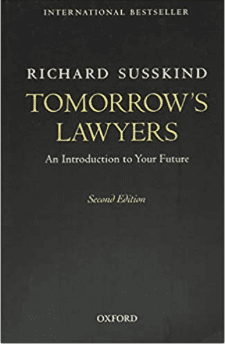ADMISSIBILITY REQUIREMENTS–RIGOROUS AND COMPLEX
The “teaching case” here–the case from which lessons can be derived–is McMahon v. Zimmerman, 433 S.W.3d 680 (Houston Court of Appeals (1st District), March 27, 2014). Case Number 01-12-01090. Review was not sought in the Supreme Court of Texas.
McMahon was the client-plaintiff-appellant (C), while Zimmerman was his lawyer-defendant-appellee (L). C sued L for errors in advice given regarding settlement, while C sued L for not paying her fees. (The matter of the fees will be taken up in a separate blog it will be taken up in a different one.)
The problem in this case was that C’s expert witness (EW*) was partially and significantly kicked out of the case. In other words, there were key things EW could not say, i.e., could not testify to. In a legal malpractice case, if a key expert witness’s getting kicked out happens to C, it is virtually certain that C will lose the case. Hence, C’s appeal here was that the district judge erred when kicking EW out, to the extent he was. (*In this essay “EW” sometimes refers to the expert testifying in the case being discussed and sometimes to expert witnesses in general. Confusing, I know.)
The basic rule on the admissibility of the testimony of an EW is that EW must be (1) qualified, (2) his/her proposed testimony must be reliable, and (3) the testimony must be of a sort that it will assist the trier of fact, whether jury or judge alone.
Reliability is determined by three factors:
Was EW’s methodology sound?
Was EW foundational data of the right sort, and if so sufficient and sound, for that sort?*
Was there a satisfactory analytical relationship between EW’s data and methodology, on the one hand, and his/her conclusions, on the other.
(*Of course, this does not imply that the EW’s foundational data must be true. That is for the finder of fact to decide. The truth is that some times, “foundational data” can consist of relevant assumptions.)
Expert testimony is unacceptable if too great an analytical gap exists as to how EW connects the foundational data or methodology with the opinions. These standards are supported by substantial authority. “‘It is incumbent on expert[s]to connect the data relied on and his or her opinion and to show how that data is valid support for the opinion reached.'” “‘A court may conclude that there is simply too great an analytical gap between the data and the opinion proffered.'” “‘An expert’s opinion is unreliable if it is based on subjective belief or unsupported speculation.'””Opinions must have a reasoned basis; an expert must explain how he reached his conclusion.” Experts must explain themselves, their empirical investigations, and their reasoning. Oddly enough, sometimes it is said that expert opinions can be “too conclusory.” Probably this means that the opinions, which are like the conclusions to arguments, are insufficiently supported by the premises.
Obviously judging whether these requirement are met requires analytical attention from the district judge. But such judges have substantial discretion in making a decision.
The issue in this case looked like a simple one. L recommended to C that he agree to pay all of the community debt; C took the advice, and and so he agreed. The problem was that the community debt was around $600,000, and C came to believe that he should have been responsible for only half of that. It is not unusual for Texas courts to divide community debt 50-50, or so, but this can vary sharply from case to case, given the facts in different cases.
The problem was that EW had to be able to testify authoritatively that L’s advice was unreasonable and the cause-in-fact of C’s damages, i.e., his agreeing to pay $300,000 extra–what he regarded as her half. EW has to be able to testify, in a case like this one, where advice is involved, that L breached the standard of care in giving the advice she did and convincing C to follow that advice.
EW cannot simply say “‘Take my word for it, I know’ what I am talking about.” Empirical data and reasoning are required. EW must explain how s/he reached his/her opinion. Relevant matters must be explained and conclusions justified. Long years of experience are, by themselves, are almost never sufficient.
The central problem in this case was that EW, a law school professor who taught family law and who practiced it or had done so, could not establish the solidity of his conclusion. He was testifying that L’s recommendation was negligent because it is very unlikely that a district judge would have entered a judgment that C would have to pick up the whole tab.
But this was not a routine case. Set aside the amount of money involved and set aside the fact that Wife had some money of her own, i.e., some separate property. What makes it unusual from the point of view of reasonably predicting what a judge will do is that allegations of “spousal abuse and infidelity” were at issue in the case.
If these allegations are “provable,” in the sense that one spouse did “them” and the other did not, the idea that the judge will probably do a 50-50 split on debt responsibility flies out the window as a reasonable prediction. If the spousal abuse, in particular, involves violence (or one of its cousins) by a man on a woman, EW would have to be very restrained and cautious about giving any opinion on how the judge might handle debt distribution, especially insofar as favoring Husband is concerned.
EW was apparently not either one. Moreover, EW had not handled a number of precisely*(*See the end paragraph.) these kinds of cases, and had not done the kind of empirical research that would have to be done to support his opinions. (In fact, I doubt the empirical research could be done objectively and thoroughly at peer-review standards, and if it could be done, it would probably cost at least $300,000.)
(EW’s principal research apparently was to read reported case, and he found 4 of them that supported his opinion, and presumably none that contradicted it. The appellate court observed–more or less–that four cases out of a much, much larger “population” that get decided is not reliable empirical research. Reported cases may be authoritative in the sense that they provide precedent or something like it, but they are not authoritative when it comes to proving what is likely in the material world. It is an obvious fallacy to think otherwise. Similarly, reported cases do not necessarily indicate patterns of settlement.)
There is also something to be said about a theoretical dimension, and, at this point, I am about to remark on a matter not found in the opinion of the court of appeals or in the findings of fact set forth by the district judge. Here it is. It is extremely difficult to prove a malpractice case on the basis that L negligently provided C with an ill-advised opinion. Legal malpractice cases are very difficult to win anyway, but they are much more so when bad advice is the alleged cause. This is true for several reasons:
First, C made his own decision and agreed to go forward. There was no suggestion in the case anywhere that C was a numskull. There is no suggestion that L tricked him into making the decision he made.
Second, C did not check L’s advice. C can do this sort of thing very easily, and (comparatively speaking) it doesn’t cost that much.
Third, in this case, C did not deny the truth of the claim of spousal abuse. In order to win this case, C would have to do something about this: Deny it. Claim Wife is a liar. Claim there was only one abuse-event. And maybe it should be claimed that the one even was a mild one, anyway. Claim that the several incidents were minor, if there was more than one. Claim that the incidents were provoked, or performed in self defense. Claim that it went back and forth. And so on.
C exercised none of these tactics. Without one or more of them, there is very little chance that L’s advice would be found less than in the range of the quite reasonable. This would be true even if the spousal abuse claims were not physical violence. In either case there is even less chance that it would be found to be negligent. Caution in settlement is often a good thing, and prudence in litigation is always a virtue. (Of course, C could claim, “I am a gambler. I love taking chances. L discouraged me from doing that, gutless chick that she is. Hence, . . . .” Obviously, that strategy lacks any wisdom at all.)
This malpractice case was a bad idea. It was a worse idea for EW to have anything to do with it. After all, it is embarrassing to Professor EW; and this is a reported case. I’d bet, however, that EW warned C that his (C’s) case would very likely fail and that his (EW’s) testimony was not likely stem the tide. (My bet, of course, assumes that EW is a sound thinker and an able lawyer.)
Here is a next-to-the-last remark, and I am not sure I’m right about this. Testifying about how a judge will decide a case or part of a case in and of it self usually a bad idea. It’s too unpredictable, and/or–in any case–it’s too subject to controversy.
Now for a last remark, and I am entirely uncertain about this one. Suppose L gave sound advice, but for the wrong reasons. Would that generate a winnable mal practice case. I doubt it, though it may be puzzling to some of us.
Interestingly, there was another feature of this case, pertaining to the fact that some of L’s fees were not paid. I will treat that in a separate blog-essay, much shorter than this one.
******************************************************
*I myself am nervous about requiring EW to have handled precisely the same kind of case. First, “precise” is an accordion-like concept if ever there was one. What is precisely the same kind of case. It is easy and not always accurate from a practical point of view to say that two states of affairs are not precisely the same, when they are that, though not exactly that, from a pragmatic standpoint. Second, the lawyer literature contains reliable discussions regarding the different ways in which judges may handle different distributions of community property at the ends of marriage. (Alas, they do not tend to favor EW.) Third, knowledge can come from other sources than actually doing that about which there is to be testimony. Study of X of the right sort, may be just as good as doing X, sometimes. Study can not only lead to knowledge; it can lead to wisdom, if done by an appropriate person, at the right time, at the right length, and from the right texts.





Recent Comments